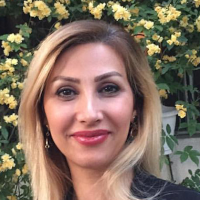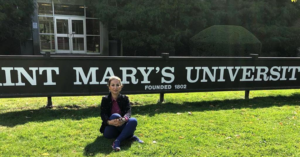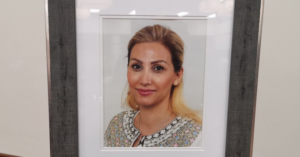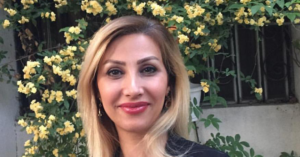Maryam Malek
Maryam, the Story of That Sacred Tree
On January 12, 2020, amid one of the coldest winters the Earth will ever remember, Maryam was buried in the courtyard of a shrine to Imamzadeh Esmaeil, in the gardens of Zargande.
The grave was very close to where the sacred tree of Zargande once stood. It’s been a hundred years since they cut that Mediterranean hackberry tree down, and no one knows why or how. Just like no one knows why or how two missiles passed through Maryam’s hands and cut them down forever. Maryam’s name is now like that of the sacred tree: a mark of remembrance of the grief in our hearts.
The tree is from Kermanshah, where they use such timber to make pendants for children to protect them from the evil eye. Now, Maryam’s shrine will, too, have its own tree – or trees – whose branches might be used to make pendants, that might hang around children’s necks so that they never forget what Maryam went through; how this newly blooming flower was torn asunder by two missiles.
Maryam was born on a cold winter’s evening on February 9, 1980, in Kermanshah’s Aban Hospital. Her grandfather divined her name by opening the Quran. It opened on the chapter named Maryam.
She had a small body. But from her very first days, you could see that knowledge and ability would be the two driving forces in her life. Maryam learned to sit, stand, run and talk much earlier than the other youngsters her age. She didn’t like dolls; books were her best friend.
Maryam had a cause. She was a human in love with nature and animals, but also with people who were struggling, disabled children, orphans and the downtrodden. She was an egalitarian and was agitated by gender discrimination.
Maryam loved to teach and study. She obtained her high school diploma at Mehrshahr in Karaj. When her family moved to Tehran, she studied English at Azad University. In 2007, she enrolled on an MBA course at Tehran’s prestigious Sharif University. Much later, in 2019, she received an offer from Saint Mary’s University in Halifax, Canada to get her second MA, this time in finance. This, though, was never to be.
Maryam could have achieved scholarly distinction. She could have brought even more light into her life and into those of others. She spoke English, French and German; perhaps she could have been an interpreter of the maladies of the world’s suffering people whom she loved. She could have been a lifelong learner. She could have built more lasting friendships. She could have done more charitable work. She could have kept enjoying Master Mohammad-Reza Shajarian’s music. She could have kept loving more. She could have been even happier, lived even more.
Maryam, a daughter of the Kurdish people, a star of their skies. She was proud of her people. She wanted to be called a Kurdish name and she picked the name Jivar for herself. Jivar means homeland, land of life – and she loved life.
Maryam could have been happier. If only the missiles of her very own country had allowed her to realize this last wish. If only she could have brought her parents to Canada to live with her, and she could have enjoyed the sweetness of life with her mother, seen her father shoulder his new life there. Maryam had wanted a better life and she had wanted it for her family too.
She had come to Iran for the two-week holiday between semesters. She wasn’t to know that this would be her last visit to a land that would mourn her: a young woman aged just 40 at the time of her death. They had exacted upon her the most unjust death you could imagine: packed on a plane alongside brides and grooms, young couples, small children and infants, fathers and mothers and their dear offspring, all innocent, all victims of a crime for which no one has taken responsibility. One hundred and seventy six innocent people in the skies of Tehran, not knowing their sad fate would be to burn to ashes.
Maryam was one of them. Her story now joins the many, many stories of humans brutalized by a system from which they were trying to escape. Like all of those 176 people, she had hopes. Hopes for a future in which the lives of all humans would be of equal value.
When they buried Maryam, her mother opened the Quran. Once more, it fell open at the chapter named Maryam. Her mother remembered the perennially smiling face of a little girl in her wedding dress, the netting veil over her head, laughing at the camera. Her father remembered a young woman, tiny and slender, with straight, silk-like hair flying in the wind, a calm ocean behind her, a camera in front of her, with a smile that in his eyes was the most beautiful in the world. A long red shawl around her neck, and hands that brought about miracles.
Her sister Sara remembers a woman, happy and hopeful, who wanted to make the world a better place to live in. From the moment of their farewell, there has only been missing her, and a single question: Why?
Maryam Malek! Your story, like that of the sacred Mediterranean hackberry that was chopped down with an axe, will be read in books by children. The wind will take your story from one city to the next. The seekers of justice will make your story eternal and, wherever in the world that the Maryam (tuberose) flower grows, your story will live on.
Writer: Bita Malakooti
Translator: Arash Azizi
Editor: Hannah Somerville
With the support of iranwire.com




